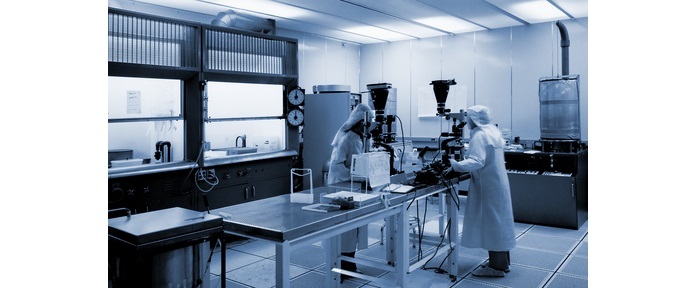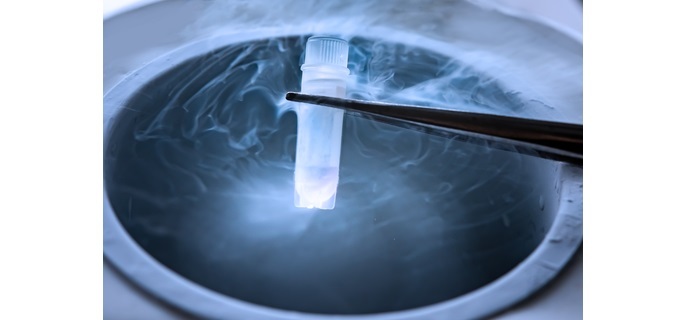
 Data Structure
Data Structure Networking
Networking RDBMS
RDBMS Operating System
Operating System Java
Java MS Excel
MS Excel iOS
iOS HTML
HTML CSS
CSS Android
Android Python
Python C Programming
C Programming C++
C++ C#
C# MongoDB
MongoDB MySQL
MySQL Javascript
Javascript PHP
PHP
- Selected Reading
- UPSC IAS Exams Notes
- Developer's Best Practices
- Questions and Answers
- Effective Resume Writing
- HR Interview Questions
- Computer Glossary
- Who is Who
Media and Techniques for Growth, Regeneration and Storage
Introduction
In the field of biology, growth and regeneration are fundamental processes that are essential for the survival of organisms. However, the storage and preservation of biological materials are equally important, as they ensure the continuity and reproducibility of research.
Discussed below are various media and techniques used for growth, regeneration, and storage of biological materials.

Media for Growth and Regeneration
Media are nutrient-rich solutions used for the growth and regeneration of cells and tissues. The composition of the medium is critical, as it directly affects the growth and viability of cells. Here are some commonly used media for growth and regeneration ?
DMEM (Dulbecco's Modified Eagle's Medium): DMEM is a nutrient-rich medium used for the growth of a wide range of mammalian cells. It contains essential amino acids, vitamins, glucose, and other growth factors that are necessary for cell proliferation.
RPMI (Roswell Park Memorial Institute) Medium: RPMI is another commonly used medium for the growth of mammalian cells. It is similar to DMEM in composition but contains additional nutrients, such as vitamins B12 and folic acid.
MEM (Minimum Essential Medium): MEM is a basic medium used for the growth of a variety of cells, including hybridomas, fibroblasts, and embryonic stem cells. It contains essential amino acids, vitamins, and glucose, but lacks some of the growth factors present in DMEM and RPMI.
FBS (Fetal Bovine Serum): FBS is a commonly used supplement added to cell culture media to promote cell growth and survival. It contains growth factors, hormones, and other nutrients essential for cell proliferation.
DMEM/F12: It is a hybrid medium that combines the benefits of DMEM and Ham's F12 medium. It is often used for the growth of primary cells and stem cells.
Ham's F12: Ham's F12 is a nutrient-rich medium used for the growth of a variety of cells, including hybridomas, lymphocytes, and embryonic stem cells.
Neural Basal Medium: Neural Basal Medium is a specialized medium used for the growth of neural stem cells and neurons. It contains essential nutrients and growth factors that promote neural cell growth and differentiation.
Techniques for Growth and Regeneration
In addition to using nutrient-rich media, there are several techniques used for the growth and regeneration of biological materials. Here are some commonly used techniques ?
Cell Culture
Cell culture is the process of growing cells in vitro. It involves the use of a nutrient-rich medium and a controlled environment to promote cell growth and proliferation. Cell culture is widely used for the study of cell biology, drug discovery, and tissue engineering.
Tissue Engineering
Tissue engineering is the process of growing tissues or organs in vitro. It involves the use of a combination of cells, biomaterials, and growth factors to create functional tissues or organs. Tissue engineering has the potential to revolutionize the field of regenerative medicine by providing a viable alternative to traditional organ transplantation.

Stem Cell Culture
Stem cell culture is the process of growing stem cells in vitro. Stem cells are undifferentiated cells that have the potential to differentiate into a variety of cell types. Stem cell culture is widely used for the study of stem cell biology, drug discovery, and tissue engineering.
Microfluidics
Microfluidics is a technology that involves the manipulation of small volumes of fluids in microscale channels. Microfluidics has emerged as a powerful tool for cell culture and tissue engineering, as it allows for precise control of the cellular microenvironment.
Bioreactors
Bioreactors are devices used for the large-scale production of biological materials, such as cells, tissues, and organs. Bioreactors provide a controlled environment that mimics the physiological conditions of the organism.
3D Printing
3D printing is a technology that allows for the creation of three-dimensional structures from digital designs. It has emerged as a promising tool for tissue engineering, as it allows for the creation of complex structures with precise control over shape, size, and composition.
CRISPR/Cas9 Genome Editing
CRISPR/Cas9 is a powerful genome editing tool that allows for the precise modification of DNA sequences. It has revolutionized the field of biology by enabling researchers to study the function of genes and develop new treatments for genetic diseases.
Media and Techniques for Storage
In addition to growth and regeneration, the storage and preservation of biological materials are equally important. Here are some commonly used media and techniques for storage ?
Cryopreservation
Cryopreservation is the process of freezing biological materials at extremely low temperatures to preserve them for long periods. It is widely used for the storage of cells, tissues, and organs. Cryopreservation involves the use of cryoprotectants, such as dimethyl sulfoxide (DMSO), to protect cells from damage during freezing.

Liquid Nitrogen Storage
Liquid nitrogen storage is a commonly used technique for the long-term storage of biological materials. It involves the storage of biological materials in liquid nitrogen at a temperature of -196°C. Liquid nitrogen storage is widely used for the storage of cells, tissues, and organs.
Freezing
Freezing is a commonly used technique for the short-term storage of biological materials. It involves the storage of biological materials at -20°C or -80°C. Freezing is widely used for the storage of cells, tissues, and organs.
Drying
Drying is a technique used for the preservation of biological materials by removing water from the sample. Drying is widely used for the preservation of microorganisms, such as bacteria and fungi.
Chemical Preservation
Chemical preservation involves the use of chemicals, such as formalin and ethanol, to preserve biological materials.
Conclusion
In conclusion, the growth, regeneration, and storage of biological materials are critical processes in the field of biology. The use of nutrient-rich media and advanced techniques, such as cell culture, tissue engineering, stem cell culture, microfluidics, bioreactors, 3D printing, and CRISPR/Cas9 genome editing, has revolutionized the field of biology and has the potential to transform the field of regenerative medicine.
In addition, the use of cryopreservation, liquid nitrogen storage, freezing, drying, and chemical preservation has enabled the long-term and short-term storage of biological materials for research and clinical purposes.

